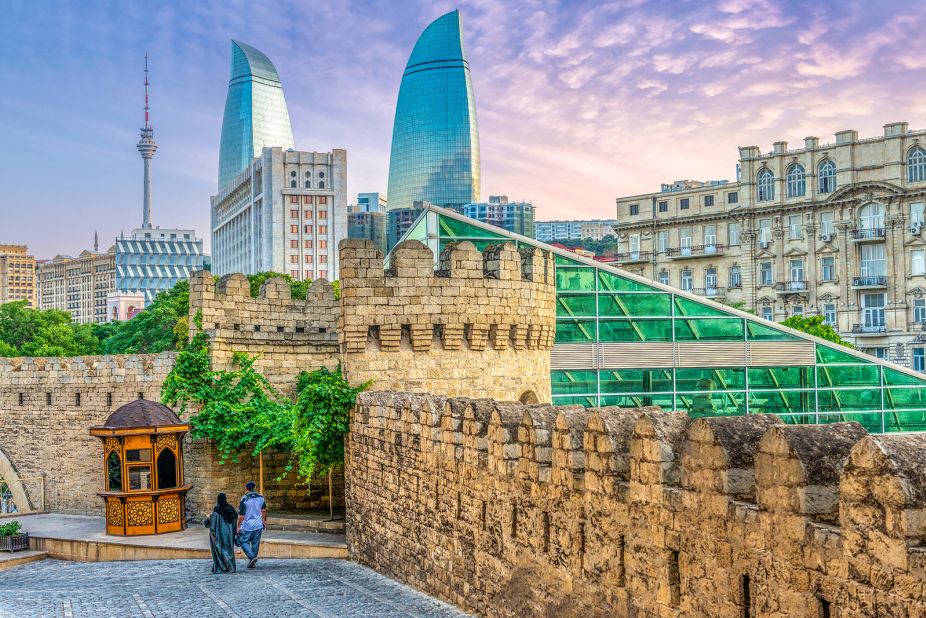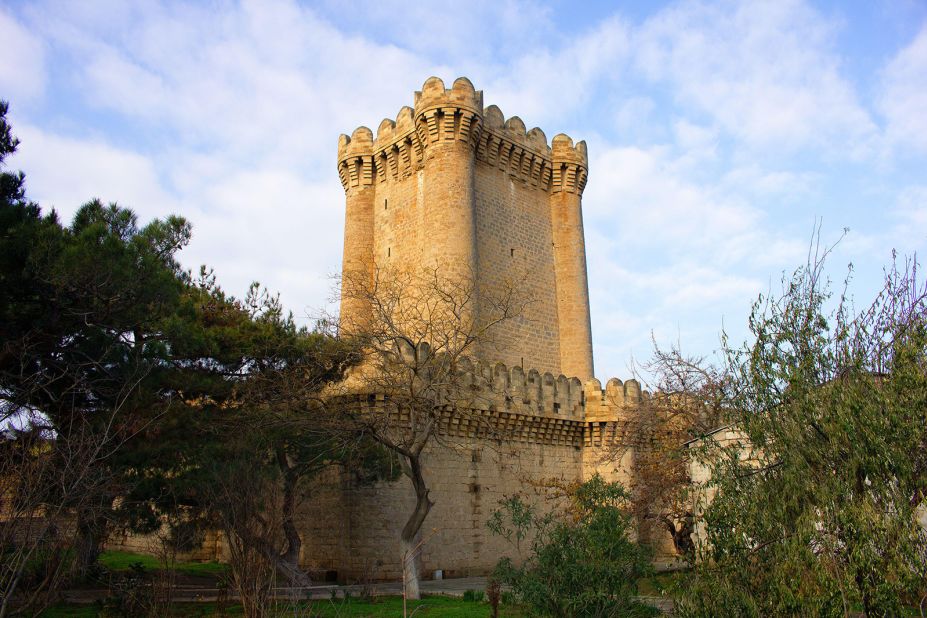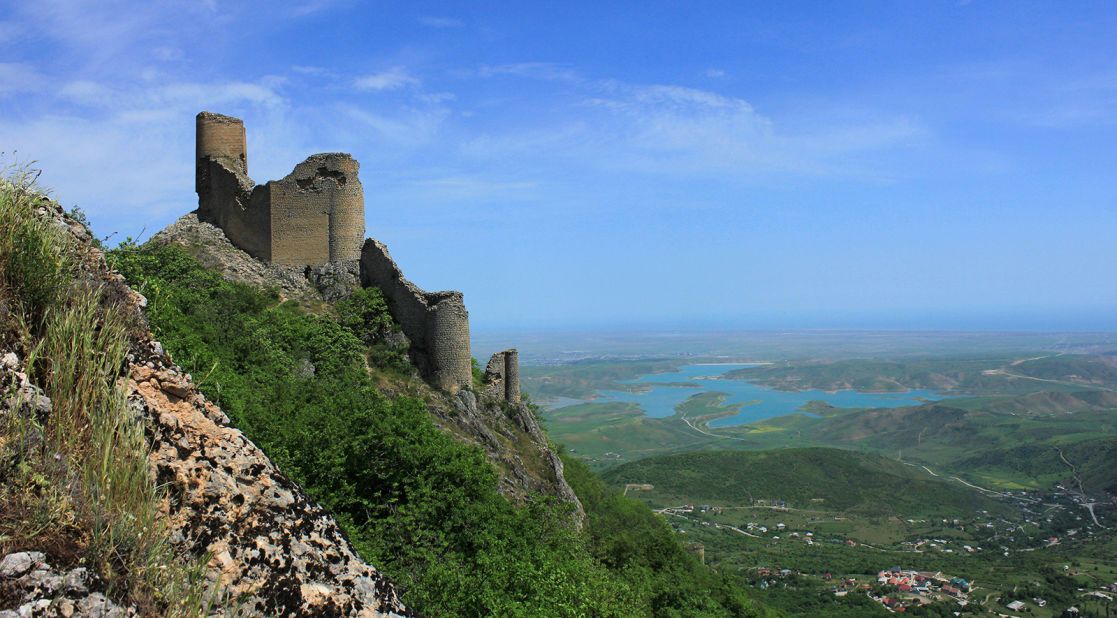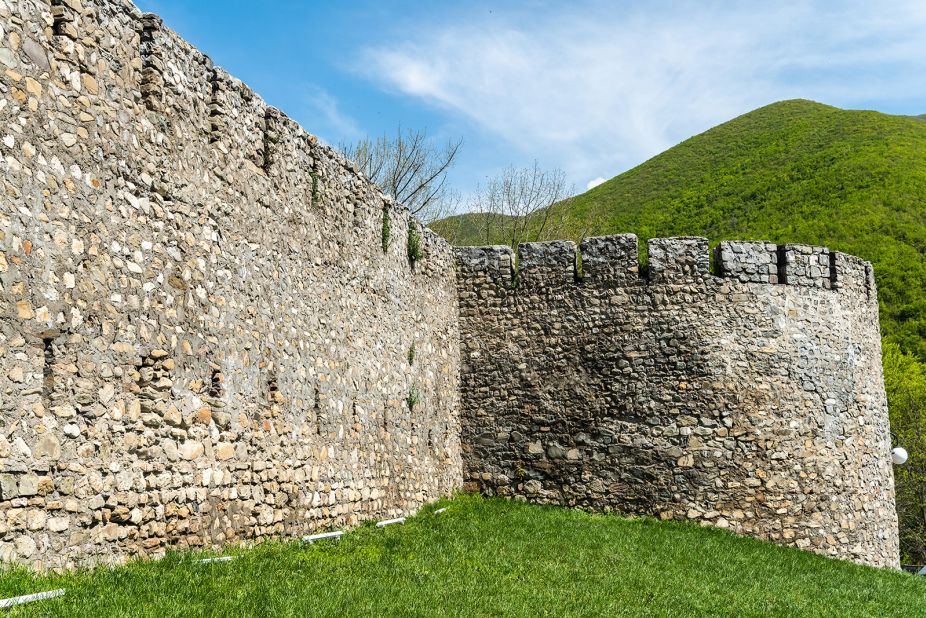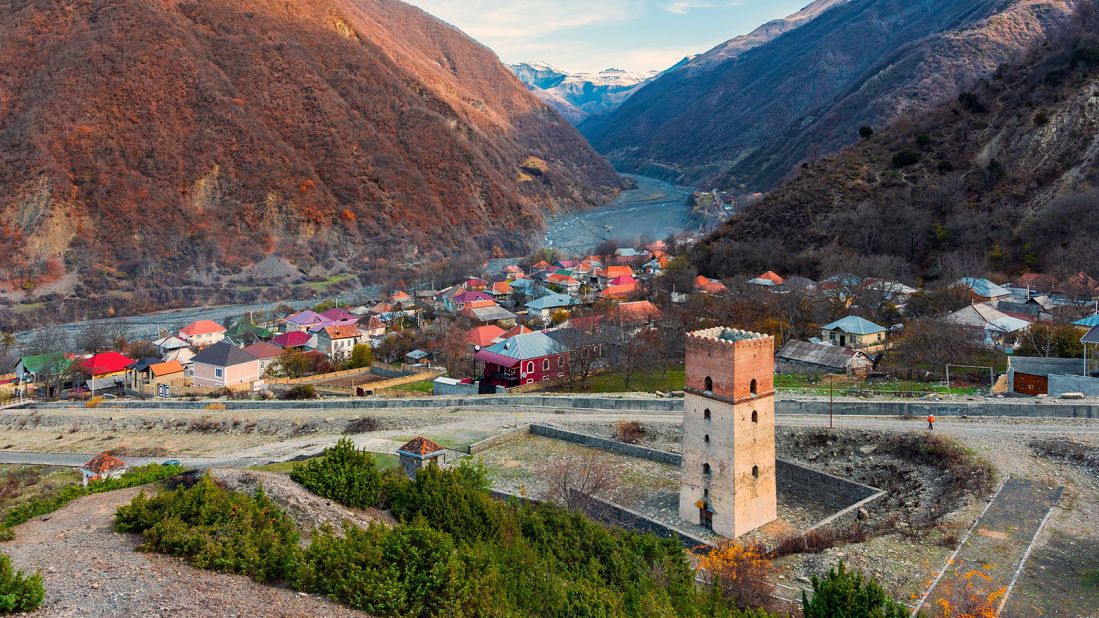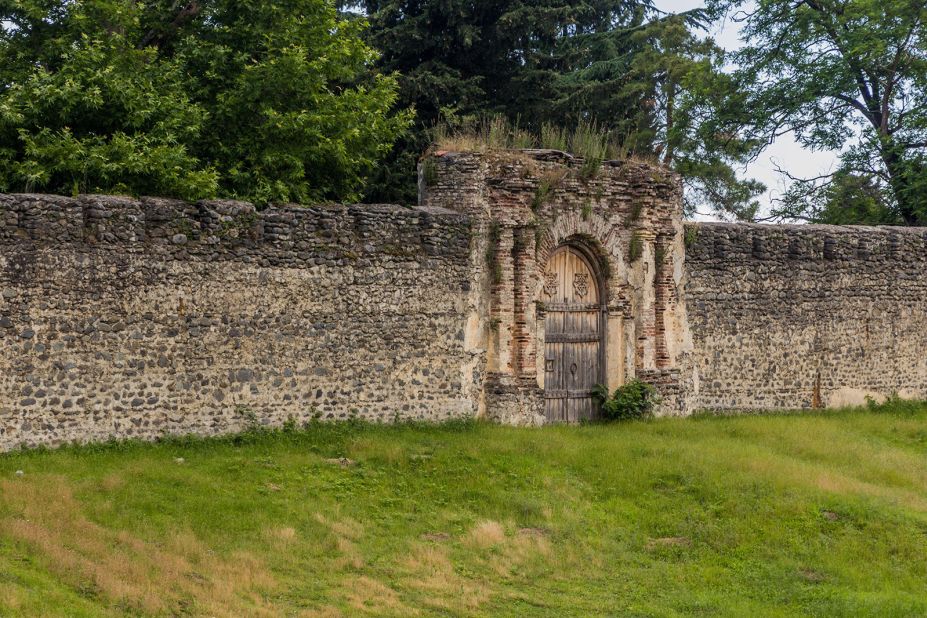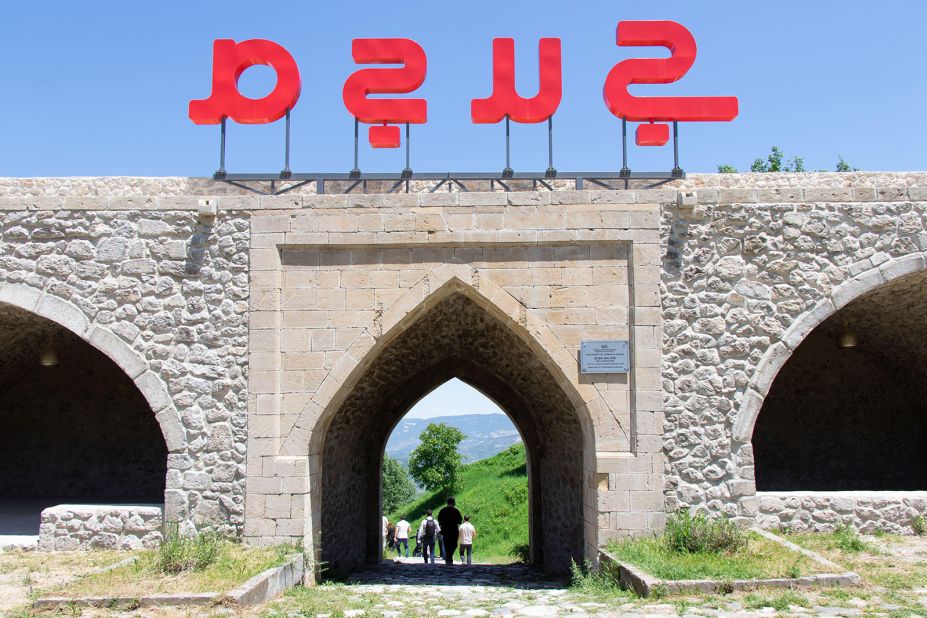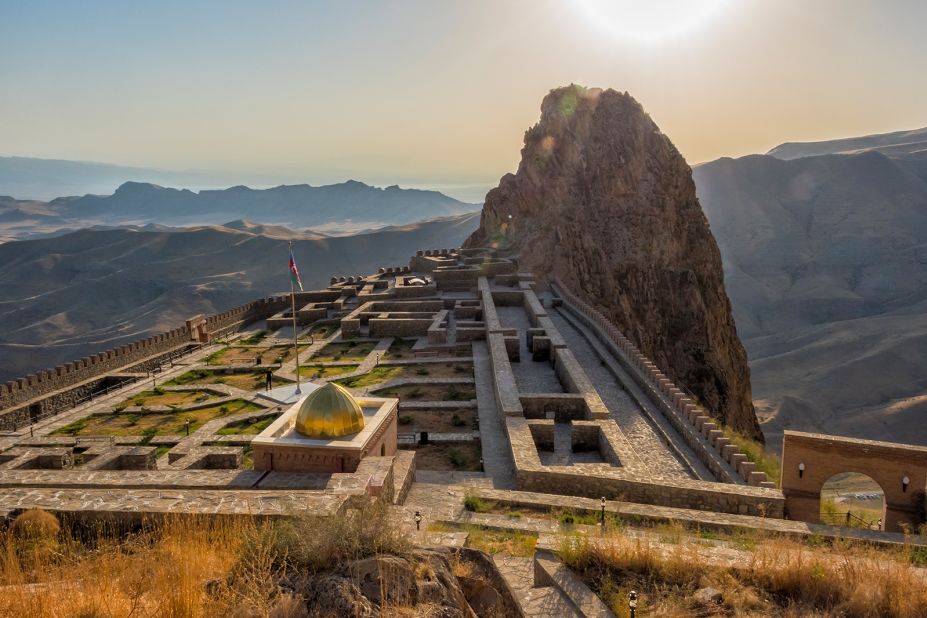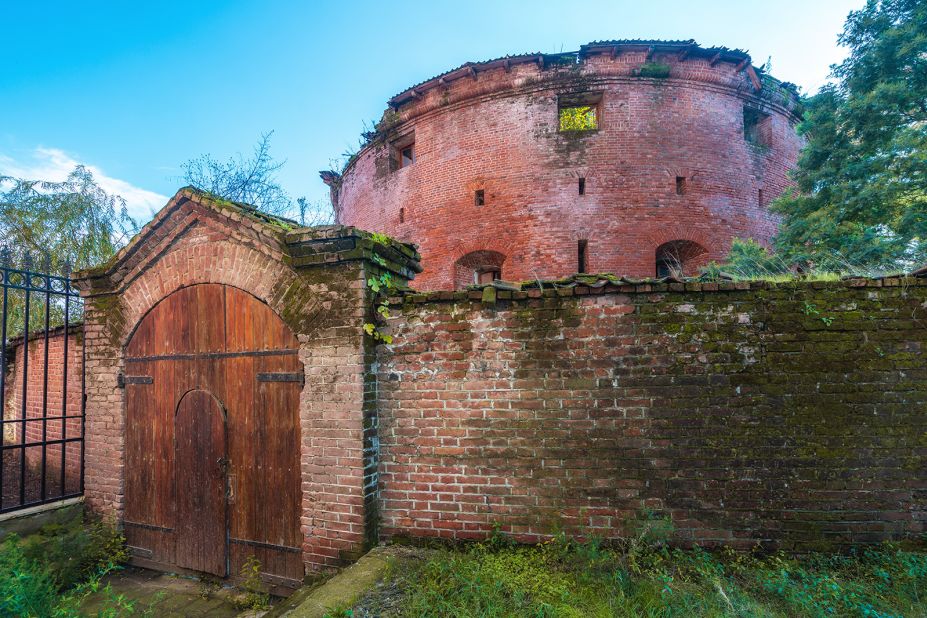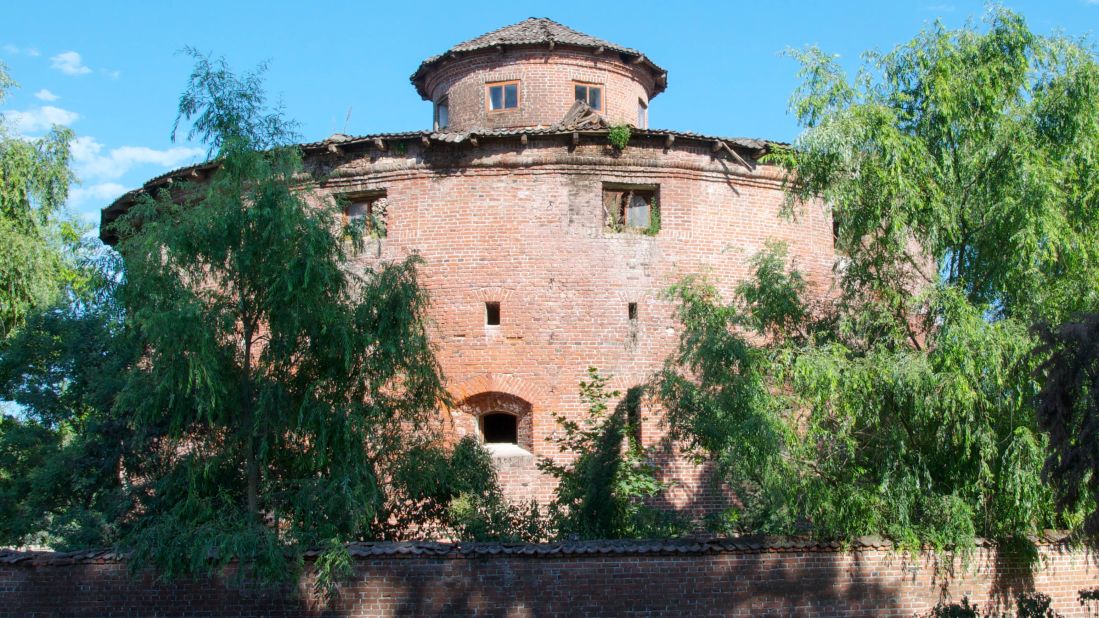Brimming with natural resources and in a prime spot at the frontier of Europe and Asia, the transcontinental country of Azerbaijan has a fascinating multi-layered history.
The “Land of Fire” has been coveted by everyone from legendary conquerors like Alexander the Great and Timur to expansive empires such as the Achaemenid, Roman, Ottoman, Safavid and Tsarist Russia – not to mention the countless local kingdoms and dynasties.
All left their mark on the culture, cuisine, folklore and mindset of modern Azerbaijan. Meanwhile, more tangible reminders of their presence – and power – remain in the abundance of castles, fortresses and fortified towers found all over the country, from city centers to remote mountain tops.
“Azerbaijan has been at the crossroads of many trade routes in the world for thousands of years, including the Great Silk Road,” says Elchin Aliyev, a leading local architect and author who’s written a children’s book about the country’s castles. “For thousands of years, many peoples, cultures, and customs have passed through, lived and settled here.”
The buildings they left behind are “the visible history of our country. They are silent witnesses of many events from our rich history, both its successful periods and tragic ones,” he says. “Often, in order to understand historical events, you need to be at the place where they occurred, to feel the atmosphere of that period, mentally traveling back many centuries, as if in a time machine or on an Oriental magic carpet.”
This powerful architectural legacy remains underexplored due to Azerbaijan’s 20th-century history. “Many [castles] are abandoned, no excavations have been carried out there – during the USSR, studying the history of the national republics was not welcomed.”
But unexplored also means unexploited. Today they offer imaginative travelers a glimpse of the country’s living history and multicultural heritage, without crowds of fellow tourists to jostle alongside. Here are 10 sites to put on your wishlist.
Old City of Baku
You don’t have to travel far to see Azerbaijan’s impressive history. The heart of its capital city, Baku, is itself a medieval citadel, inscribed in 2000 as a UNESCO World Heritage site. The narrow Oriental alleys and centuries-old houses of this buzzing neighborhood are sprinkled with historic hamams, mosques, caravanserais and palaces.
Baku’s ancient icon, the Maiden Tower, also looms here close to the Caspian Sea, its mysterious shape still inspiring debates as to its origins. Some historians suspect it was a Zoroastrian fire temple (place of worship) in the fifth century, while others believe it came with the fortress walls in the 12th century.
Quadrangular Mardakan Castle
North of Baku, a series of small castles are dotted around the Absheron Peninsula, protruding into the Caspian Sea. In the medieval era they formed a unified defensive system guarding the main trade routes and protecting the coastline from invasion, and legend has it that they were all linked via underground tunnels. One of the best preserved is this quadrangular fortress in the historic village of Mardakan which was built by the Shirvanshah dynasty ruler Akhsitan I in the late 12th century. Inside is a courtyard and 72-foot tower.
Chirag Gala
These fortified fragments of a tower and wall in the northeastern Shabran region are from the oldest castle on this list – supposedly dating back to the sixth century and the era of Sassanid Persia. Inaccessible by road, travelers must trek up to its dramatic setting atop a rocky outcrop, but are rewarded by commanding views of land and sea.
Chirag is believed to have been an observation post along the Gilgilchay Wall, a massive defense system designed to prevent incursions by northern nomadic tribes such as the Huns via the Caucasus mountain passes and Caspian coastline. Its name translates from Azerbaijani as “Lamp Castle,” referring to the fires that were lit here to warn of danger.
Sheki Fortress

This expansive fortress at the foot of the Caucasus Mountains is a key part of the UNESCO-listed Historic Center of Sheki. Constructed in the mid-18th century, it housed the administrative headquarters of the Sheki Khanate (1743-1819) and was roomy enough to accommodate some 40 buildings along with fountains and gardens. The only survivor is the Sheki Khan’s Palace – an architectural gem erected without glue or nails and equipped with Persian miniature frescoes and multicolored windows fitted with Venetian glass, which would have traveled here along the Silk Road.
Sumug Tower
This two-toned tower, made from stone and brick, stands proudly at the base of the Caucasus Mountains near the charming north-western village of Ilisu. It harks back to an almost 300-year period when Ilisu was the capital of its own small sultanate, brought to an end by Russian subjugation in 1844. It was built sometime in the 17th-18th centuries, though no one knows by whom and what exactly for. Today it houses a basic museum on the Ilisu Sultanate and is also well known for starring in the 1981 Soviet comedy movie “Don’t Worry, I’m With You.”
Zaqatala Fortress
Dominating the city center of Zaqatala is a formidable fortress built in 1830 at the behest of Russian general Ivan Paskevich. It played an important role in helping Tsarist Russia maintain its control of north-west Azerbaijan and thwart attacks by local mountaineers loyal to the legendary resistance leader Imam Shamil during the Murid War of 1829-1859. Following the unsuccessful Russian Revolution of 1905 it served as a prison for some of the mutineers from the battleship Potemkin, later immortalized in Sergei Einstein’s 1925 silent film of the same name. Inside, several buildings and cast iron cannons survive from the Tsarist era.
Maiden Tower, Gadabay
One of the highlights of hiking through the Lesser Caucasus mountains in western Azerbaijan is sighting these mysterious ruins of a mountaintop castle overlooking the Shamkirchay river. They’re reachable via a steep footpath, and reward adventurers with fantastic views. The main medieval tower was built from bricks, probably in around the 12th century. Very little is known about its history, though some historians link it to the powerful Eldiguzid dynasty of that era. Others believe it could be even older.
Shusha Fortress
In the mountains of the breakaway Nagorno-Karabakh region, which will be officially dissolved in 2024, Shusha is a city of great cultural and historical significance. It grew up around a fortress built in the 1750s by Panah Ali Khan, founder of the Karabakh Khanate (1748-1822). At the time Russia and Persia were battling for control of the Caucasus, so for maximum protection the vulnerable khanate’s central stronghold was erected upon a 5,000-foot mountain plateau surrounded on three sides by impregnable cliffs. Built from local limestone, its walls stretch for 1.5 miles, with three large gates, and numerous circular guard towers. In 1795, forces in the fortress famously fought off an invasion by Persian Shah, Agha Mohammad Khan Qajar.
Alinja Castle
The jaw-dropping location of this legendary castle, lying across the peak of Mount Alinja in the heart of Azerbaijan’s exclave of Nakhchivan (an autonomous republic within Azerbaijan, bordered by Armenia, Iran and Turkey), has prompted comparisons with Peru’s Machu Picchu. Its history is long and complex, one of the highlights being the siege of Alinja by Turco-Mongol conqueror Timur (or Tamerlane) from 1387 to 1401 (he succeeded after 14 years). The current castle is a complete new build on top of the original remains, which somewhat diminishes the historical atmosphere – however it’s worth climbing the 2,000 steps up the mountainside for the incredible views alone.
Zindan Tower
The lovely Lankaran district of Azerbaijan
Last but not least, this stumpy cylindrical structure in the south-east of the country began life as a tower of the Lankaran Fortress, which served as the center of the Talysh Khanate (1747-1828) prior to a bloody but successful Russian siege in 1813. The fortress was later destroyed but Zindan survived and ended up functioning for many years as a prison. According to local legend, Joseph Stalin was briefly held here at the beginning of the 20th century before escaping via an underground tunnel.
